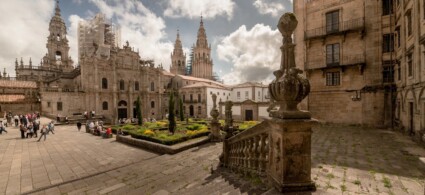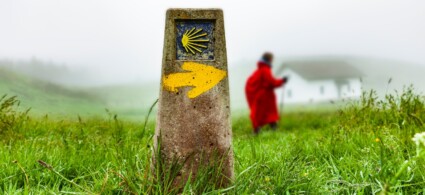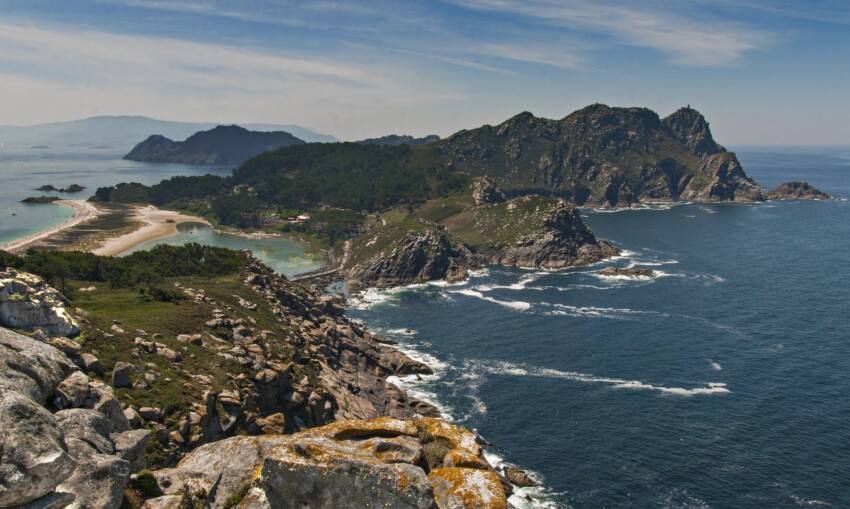

Galicia is the antithesis of Spain. Long, sun-kissed sandy beaches? No: verdant landscapes and frequent rainfall that are more reminiscent of Nordic countries like Ireland and England. Flamenco rhythmed by castanets? No, it is the sound of bagpipes that enlivens traditional Galician festivals. Castilian? No, it is Galician that is the official language.
No less charming or fun, Galicia is a region that attracts a less boisterous tourism than Spain’s most famous resorts. Its inhabitants appear shy and reserved compared to the cheerful people of southern Spain, but to those who take the trouble to get to know them better, they reveal a generous heart and a lot of joviality.
The greatest hurry of visitors arrives in Galicia on foot, at the end of a route more than 800 m long: this is the centenary Camino de Santiago, a once-in-a-lifetime experience for pilgrims and hikers who undertake this epic enterprise. The arrival point is the magnificent Cathedral of Santiago de Compostelafor the collection of the ‘Compostela’, followed by the ritual of the purifying bath in the ocean and the sunset at Cabo Fisterre.
You don’t have to walk hundreds of kilometres to enjoy the wonders of this verdant region. Take a direct flight, rent a car and discover enchanting beaches, lonely lighthouses atop sheer headlands over the ocean, ancient Celtic crosses, Roman necropolises, picturesque fishing villages and the best fish and seafood dishes in all of Spain. A plate of octopus Galician style is a must!
Does the idea of visiting Galicia tempt you and are you looking for a list of places of interest to organise your trip? There are so many things to see and do in this fascinating region, but these are the must-see attractions.
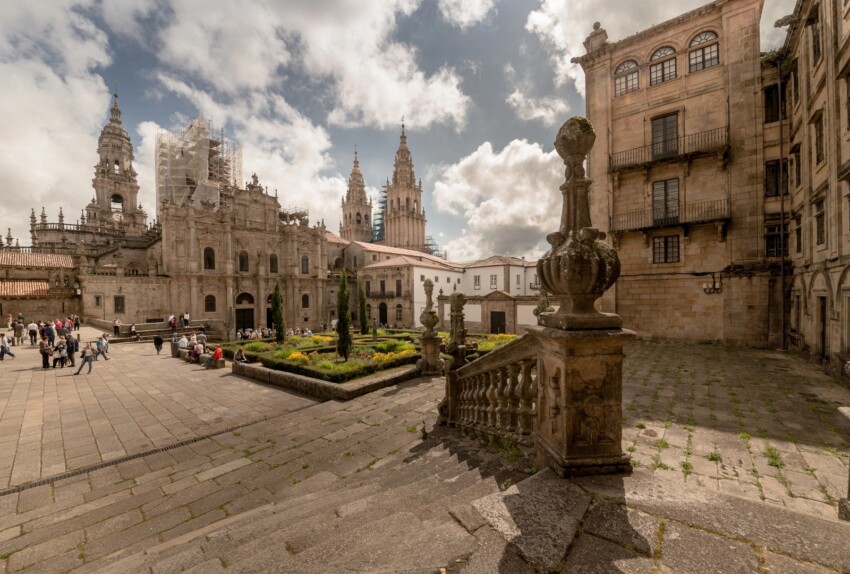
The final destination of the world’s most famous walking route, Santiago de Compostela is a symbolic city: the icon of the end of the journey, of a successful enterprise, of a dream realised.
The city’s top attraction is its magnificent Cathedral, built between 1075 and 1211 and modified several times over the centuries. The entrance is truly monumental: the Portico da Gloria is a masterpiece, decorated with 200 Romanesque statues depicting poets and apostles. Participating in the guided tour of the church you will also have access to the roof, from where you can enjoy a splendid view of the city.
Also worth seeing are the Cathedral Museum, the Museo das Peregrinacións e de Santiago, the Galician Contemporary Art Centre and the Casa do Cabildo.
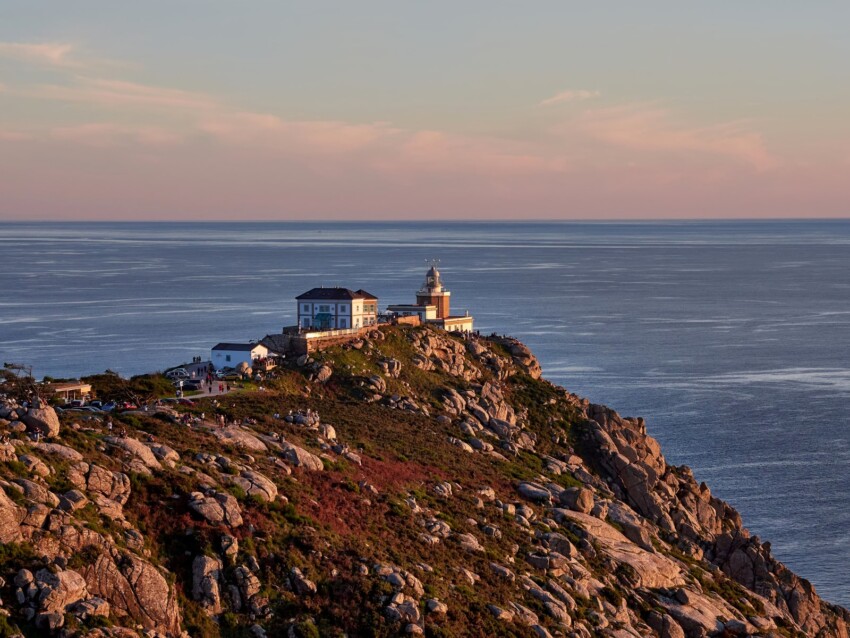
If the Cathedral of Santiago is the official end of the Camino, for all pilgrims and trekkers the experience cannot be said to be over without a detour to Cabo Fisterra (or Finisterre), a striking rocky promontory dominated by a solitary lighthouse. The ritual involves burning t-shirts, socks or other objects symbolic of the long walk that has been made.
Due to the beauty of the place, which will make you feel like you are at the end of the world, a visit is also recommended for those who have not walked to Santiago de Compostela and have nothing to burn. The best time is late afternoon: stop to admire the sunset, it is truly spectacular.
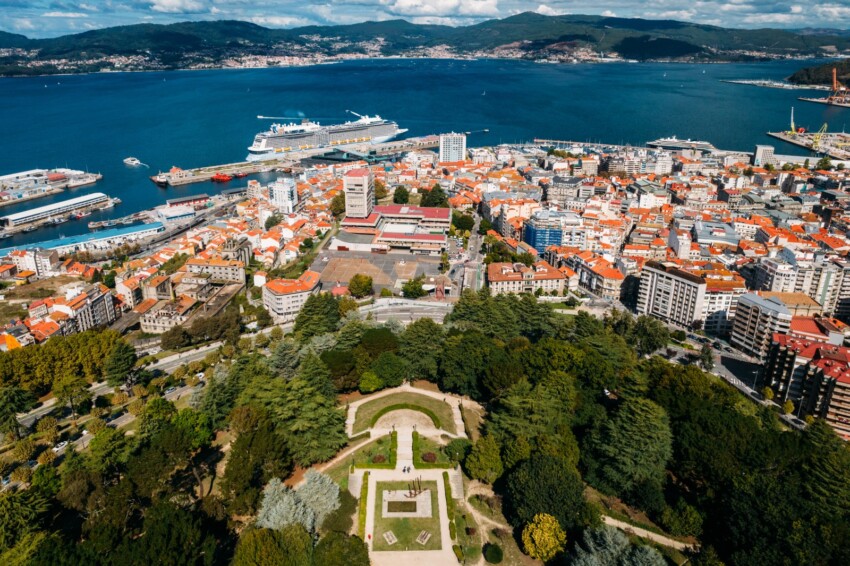
Galicia’s most populated city is not one of the most picturesque places in the region, but it is worth a visit for its characteristic Bouzas district and maritime-themed attractions: the Calle de las Ostras, where you can enjoy fresh oysters while sitting outside; the fish market, one of the largest in Europe; theMar de Vigo auditorium, a fine example of contemporary architecture with a splendid view of the sea.
A visit to Vigo is also an opportunity to spend some time relaxing on the Cies Islands, famous for their wild beauty.
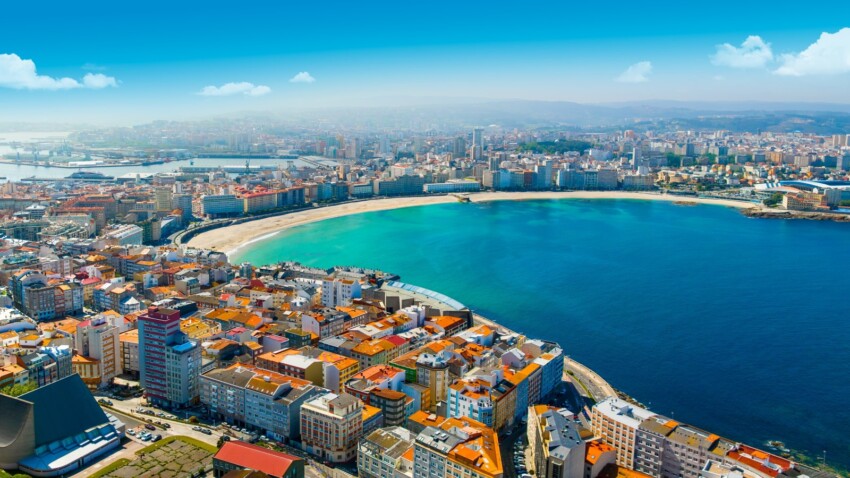
The characteristic old town of La Coruña is enclosed within an isthmus jutting out towards the ocean from the rugged coastline. From the centre, it is an easy walk to La Coruña’s most famous attraction, the Tower of Hercules: an ancient Roman lighthouse, still in use.
Little visited by international tourists, La Coruña is, however, full of attractions including the house where Picasso lived as a child, a futuristic science and technology museum, a Paseo Marítimo perfect for relaxing strolls and an original physiology museum.
After the cultural visits, explore the tasty gastronomic universe of Galician cuisine in the Pescaderia Vella area, with its high concentration of fish restaurants.
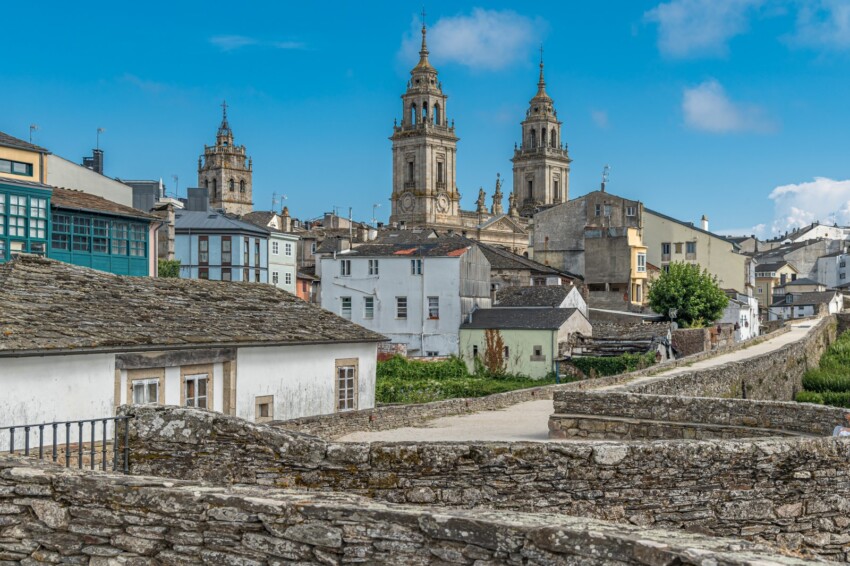
One of the most interesting cities to visit in inland Galicia is Lugo and the best way to see it is to walk along its most famous attraction: the Roman walls. Built in the 3rd century B.C., they are a 2.2 km ring that encircles the ancient core of the city at a height of 15 metres. No fewer than 85 turrets stand along the walls.
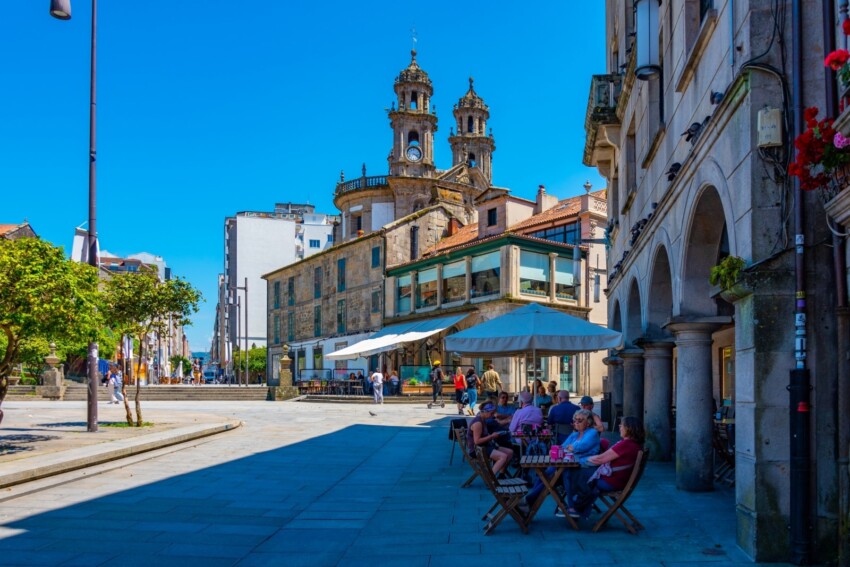
Once a run-down city, with problems of pollution, traffic, unemployment and drugs, famous only as the place where the caravel Santa Maria used by Columbus on his expedition to the Americas was built, Pontevedra has been radically transformed thanks to an urban planning project in the 1990s that severely restricted the use of cars.
Today, it presents itself as an inviting town nestled along the banks of the river, rich in history, culture and liveliness. Strolling through the narrow streets and squares of the centre without the noise of cars and the risk of accidents is very pleasant. Many people stop in the belief that they are making a brief stop, but then attracted by the shops, markets and cafés decide to stay longer.
Pontevedra is also an ideal base from which to explore the Rías Baixas, a series of estuaries in a magnificent natural setting, where Galicia’s most famous seaside resorts have sprung up.
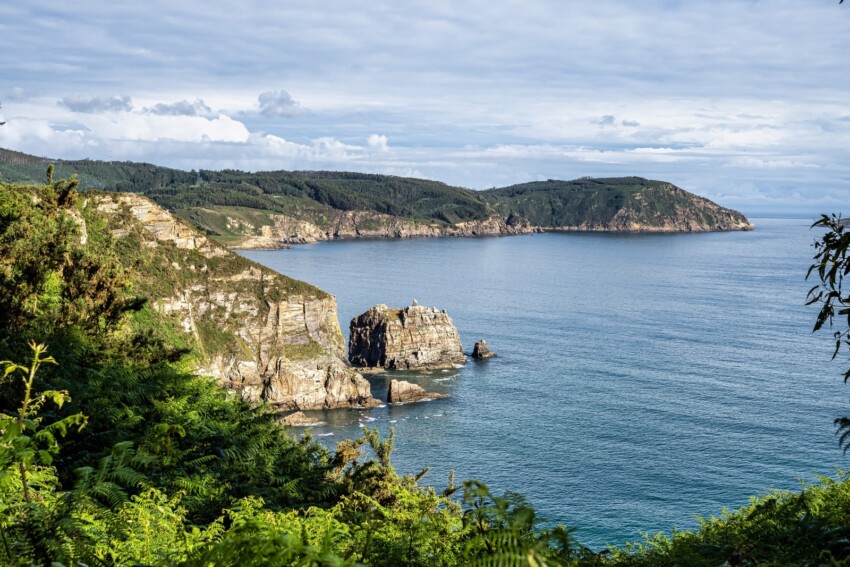
The most striking stretch of Galician coastline is the one from Muros to Caión, just above La Coruña, known by the eerie name Costa do Morte. It used to frighten ships passing through its dangerous waters, whose strong currents caused more than a few shipwrecks, but there is nothing to fear for those who today admire the beauty of this remote and wild coastline and its pristine beaches.
The interior is also worth exploring, a network of narrow streets leading through pastures and forests growing on the gentle slopes of green hills interspersed here and there with ancient churches and tiny villages.
The airports of Santiago de Compostela and Vigo are the two international airports in the region. There are not huge connections with the rest of Europe, but by looking hard you can find something. Alternatively, consider landing at Porto Airport, Portugal, and proceed with a rental car. Porto is in fact very well connected with our country and there are flights from practically every city. From Porto to Vigo there is also the train, which takes about 2 hours and 20 minutes and leaves from Campanha station.
Galicia is roughly in the shape of a rectangle with 150 km and 200 km sides. It is large but not huge, making it the perfect destination for a holiday. If you want to choose a single base, we recommend sleeping in Santiago de Compostela, which is highly developed in terms of tourism and full of hotels. This also makes it reasonably inexpensive, as the offer is very wide. It ranges from small, unpretentious hotels to luxury establishments and the ubiquitous private rental flats and bed and breakfasts.
If you want to try something new, move north to A Coruna or south to Vigo. These are two cities on the coast, both not very touristy but full of character and excellent restaurants. In both cities, the hotel offer is good, although not excessive. Therefore, we recommend that you book in advance.
